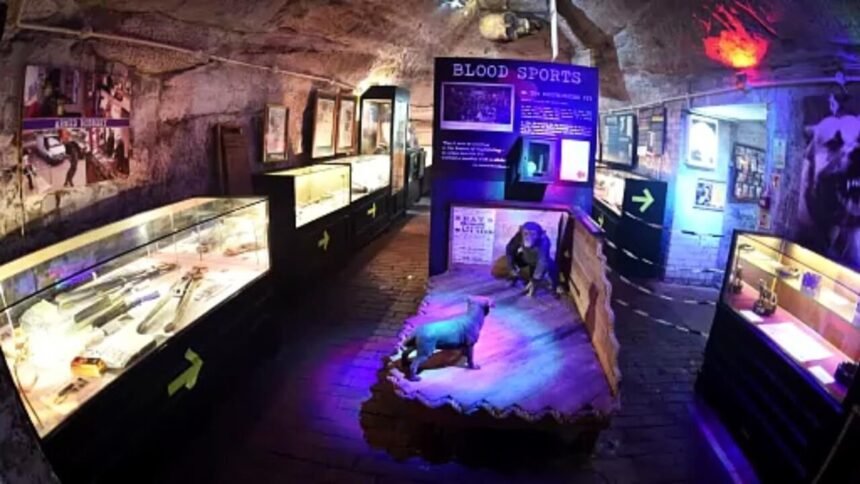True crime museums are an increasingly popular and thought-provoking attraction for visitors interested in exploring the darker side of history. These unique institutions offer an intimate, often chilling look into some of the most notorious criminal cases in history. From infamous serial killers to unsolved mysteries, true crime museums provide a space for reflection, education, and sometimes, even closure. This blog delves into the growing trend of true crime museums in the United States, exploring their significance, exhibits, and the impact they have on visitors.
The Rise of True Crime Museums: Why Americans Are Fascinated
The fascination with true crime is not new. For decades, people have been captivated by the stories of criminals, investigations, and the psychology behind heinous acts. With the rise of true crime podcasts, documentaries, and books, public interest has surged, making true crime museums an obvious next step for those seeking a more interactive experience. True crime museums, which first began as small, niche attractions, have now expanded into prominent cultural landmarks across the country, particularly in major cities such as Las Vegas, Los Angeles, and New York City.
These museums allow visitors to not only explore real-life criminal cases but also examine the social and cultural context in which these crimes occurred. The exhibits are meticulously curated, providing an in-depth analysis of the investigations, trials, and media coverage that followed these infamous events.
A Walk Through History: Iconic True Crime Museums Across the U.S.
One of the most famous true crime museums in the United States is the National Museum of Crime & Punishment in Washington, D.C. This museum delves into the history of criminal law and punishment in America, providing a unique look at both historical and contemporary crimes. It features interactive exhibits about infamous criminals like Al Capone, Ted Bundy, and the Zodiac Killer. Visitors can see real crime scene photos, evidence, and even try their hand at solving a crime in their interactive crime lab.
Similarly, the Las Vegas Mob Museum takes visitors back in time to the days of organized crime, offering a look at the rise and fall of mobsters and their influence on American society. Located in the heart of Las Vegas, a city long known for its ties to organized crime, the museum highlights the role of the Mafia in shaping the city’s history.
Another notable example is the Museum of Death in Los Angeles. This museum features an extensive collection of macabre artifacts, including crime scene photographs, autopsy reports, and personal belongings of some of the most notorious criminals in history. It’s a stark reminder of the violence and tragedy that often surrounds the darker side of society.
What Makes True Crime Museums So Compelling?
So, what is it about true crime that draws people in? Dr. Elizabeth Meyer, a criminologist and expert on criminal psychology, suggests that our fascination with true crime is rooted in our desire to understand the psychology behind criminal behavior. “People are inherently curious about what drives others to commit such violent and horrific acts,” Meyer explains. “True crime allows us to explore these dark aspects of humanity from a safe distance.”
In addition to satisfying this morbid curiosity, true crime museums often provide an educational experience. They delve deep into criminal investigations, the legal system, and societal reactions to crime. Many museums also offer a platform for discussing important social issues, such as racial inequality, mental illness, and the criminal justice system. These museums have become more than just a space for macabre fascination; they are also a space for learning and reflection.
Behind the Exhibits: The Ethics of True Crime Museums
While true crime museums may be thrilling and educational, they also raise ethical concerns. For some, the idea of profiting from tragic events and real-life suffering feels distasteful. Museums that feature real crime scene photos and personal artifacts of victims can be seen as exploiting the pain of those who have suffered.
In response to these concerns, many true crime museums have implemented ethical guidelines. For instance, they aim to treat the subject matter with the respect and sensitivity it deserves. Exhibits are carefully curated to avoid sensationalizing the crimes and focus instead on understanding the broader context. Additionally, some museums work with victims’ families to ensure that their stories are told with care and dignity.
The Psychological Impact of Visiting True Crime Museums
Visiting a true crime museum can be a deeply emotional experience. For many visitors, it’s a way of confronting their fears or gaining a deeper understanding of human nature. Studies have shown that true crime stories can evoke a range of emotions, from fear to fascination to empathy. Some people visit to face their own anxiety about safety, while others may be drawn to the complex psychological profiles of criminals.
However, it’s important to note that the emotional toll of these visits can vary. Some visitors may find the experience cathartic, while others may be disturbed by the graphic nature of the exhibits. As Dr. Meyer points out, “True crime museums can be a powerful tool for self-reflection, but it’s important to approach them with caution, especially for individuals who may be particularly sensitive to the content.”
The Educational Value of True Crime Museums
In addition to their emotional appeal, true crime museums serve as important educational tools. By providing a detailed examination of criminal investigations, they offer insight into the complexities of law enforcement, the judicial system, and criminal psychology. Many museums also feature exhibits that explore forensic science, helping visitors understand the techniques used to solve crimes.
One of the primary goals of these museums is to teach the public about crime prevention and the consequences of criminal behavior. By exploring the motivations behind criminal acts, museums encourage visitors to reflect on the broader societal implications. Through this education, visitors are often inspired to engage in discussions about the criminal justice system and how it can be improved.
The Future of True Crime Museums
As true crime continues to captivate the public’s imagination, the future of true crime museums looks bright. New museums are continually opening, and existing ones are expanding their exhibits to keep up with the growing demand for true crime-related content. With the increasing popularity of true crime podcasts, documentaries, and books, it’s clear that people’s interest in these topics is only going to grow.
The challenge for these museums will be to balance their educational value with the entertainment aspects of the exhibits. As visitor interest evolves, so too must the way these museums present their content. Future exhibits may incorporate more immersive technologies, such as virtual reality, to give visitors an even more in-depth experience.
Conclusion: A Thrilling yet Thought-Provoking Exploration of Crime and Punishment
True crime museums are a fascinating and sometimes disturbing way to engage with the darker side of human history. By offering a comprehensive look at notorious criminals, their investigations, and the legal systems that brought them to justice, these museums provide both an educational and emotional experience.
While some may find the concept of a true crime museum unsettling, there’s no denying the educational value these institutions bring. As Dr. Meyer notes, “True crime museums give us a chance to reflect on the darkest parts of human nature, but they also offer us the opportunity to learn, grow, and understand the world around us.”
In the end, whether you’re a die-hard true crime fan or someone simply curious about the subject, visiting a true crime museum offers an unforgettable journey into the world of crime, punishment, and justice.






